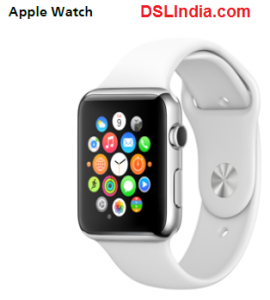 Last year, 29 million Swiss watches were sold. Theoretically, as Apple has sold about 500 million iPhones over the past five years and has an installed base of 300m, it’s not hard to understand that, on paper, the Apple Watch could be seen as a big threat to the watch industry generally.
Last year, 29 million Swiss watches were sold. Theoretically, as Apple has sold about 500 million iPhones over the past five years and has an installed base of 300m, it’s not hard to understand that, on paper, the Apple Watch could be seen as a big threat to the watch industry generally.
While the starting price is USD349, there are three versions of the watch, including an 18-carat gold one that reminds us of the golden iPhone. The Apple Watch will, of course, be used to read the time but it will also give one access to data, messages, calls, emails, measure activities, track one’s progress for workouts, use apps, enable one to pay for goods, download music, take pictures, consult maps, calendars, look at the stock market, the weather, pictures and so on.
We have made the case in the past that the biggest competitors for Louis Vuitton handbags in certain markets would be Apple iPads or cosmetic surgery as these price points would be comparable. Similarly, we believe that the biggest competitive challenge the Apple Watch will pose is to gifts retailing at similar price points, whether it is high-priced sports gear, fashion accessories and accessible watches, not just accessible watches.
High end Swiss-made watches are used as an object of decoration, a form of jewellery for men (and increasingly so for women) and as a status enhancer. Of course, consumers won’t wear two watches on the same wrist but those looking to purchase a Rolex at 20 times the price of the Apple Watch could manage to buy both as usage is very different. For social gathering, exercise or casual wear, Apple will work. For a chic dinner or a business meeting, luxury
watches could still be well adapted.